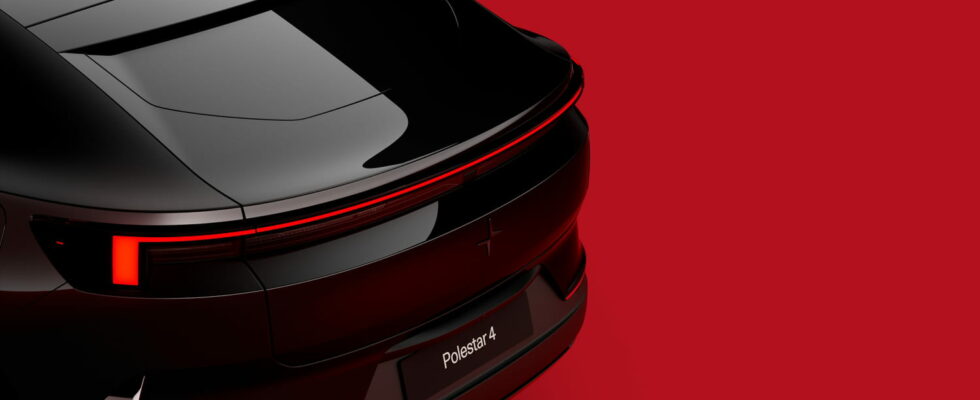An SUV is already coming to our roads and it doesn’t have a rear window!
Innovation in the automotive world has (almost) no limits. Each manufacturer is trying to stand out and, above all, not to miss the next revolution. After the autonomous car, which quickly went out of fashion, energy has focused on driving aids, the driving and on-board atmosphere, efficiency or the electric autonomy of hybrid and electric cars. With the rise of on-board digital technology, we have also seen the appearance in a few years of reversing cameras or cameras to replace exterior mirrors on high-end models.
Audi has notably experimented with this on its latest electric models. Another firm stands out, Polestar, the premium electric branch of Volvo. The Polestar 4, the latest model from the Swedish brand, arrives on our roads this year with a quickly visible evolution: this SUV coupé has no window at the back. The famous “rear window” has simply disappeared! Instead, a digital camera installed on the roof ensures rear visibility.
This innovation is not just aesthetic. The decision to remove the rear window stems from the Polestar 4’s coupe configuration, which naturally limits rear visibility. Polestar engineers concluded that the traditional small rear window of a coupe SUV only provided limited visibility while compromising space and practicality. In response, they opted for a 2.5-megapixel camera, protected from the elements and integrated without compromising the vehicle’s aerodynamics. This camera transmits real-time images to an 8.9-inch high-definition LCD screen, replacing the traditional interior rearview mirror.

Afraid of the feeling of being closed in and a dark atmosphere on board? The engineers of the Swedish brand are thinking of solving this problem with two additions. The first is a full glass roof that extends beyond the rear seats. This feature creates a unique and welcoming atmosphere for passengers. Polestar combines it with adjustable ambient lighting inspired by the solar system according to them, with a light cycle that automatically adapts to the conditions to offer a soothing and bright atmosphere.
An advantage of this architecture is that the removal of the rear window also maximizes interior space. The rear seats are also electrically reclining, adding an extra touch of comfort. This configuration improves the feeling of space and brightness, often limited in other SUV coupes. Combined with other aerodynamic features, the removal of the rear window helps improve the vehicle’s fuel efficiency and overall performance.
Adapting to the rear camera and digital screen should, however, require some adjustment time for drivers accustomed to traditional rearview mirrors. Polestar assures us that the benefits offered by this technology are numerous: a wider and clearer rear view, reduced glare caused by the headlights of other vehicles and the ability to adjust the brightness of the screen according to the driver’s needs. Finally, in the event of a breakdown, be aware that the exterior rearview mirrors, the only ones essential for the homologation of a vehicle, are very classic mirrors. In glass, therefore.
